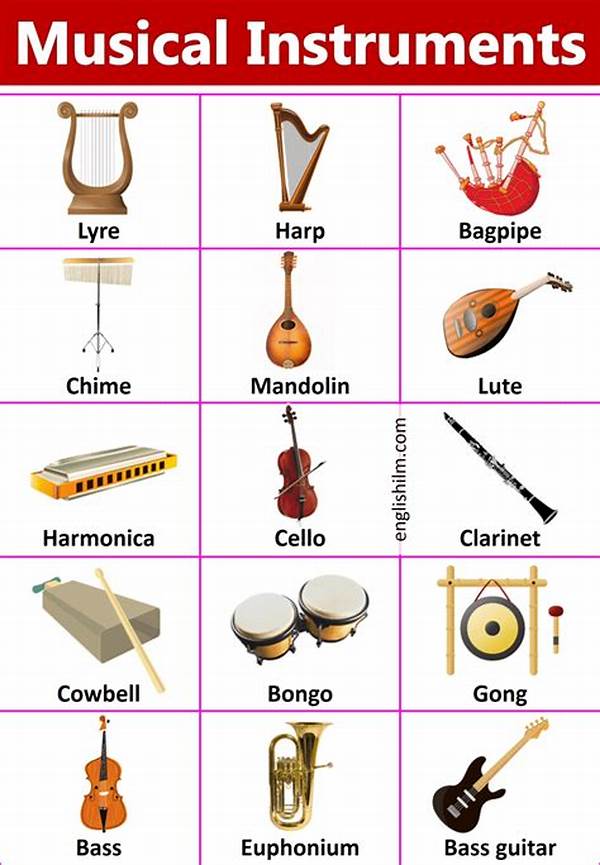Have you ever pondered the intriguing fusion of ancient and modern music? Imagine an instrument that embodies this blend, carrying the soul of ancient sound into the world of modern jazz. The result is a mesmerizing journey that not only captivates but also educates about cultural evolution in music. In this article, we delve into an instrument that bridges history with contemporary rhythms, revealing stories that resonate with today’s musical enthusiasts.
Read More : Name A Musical Instrument Considered Sacred In Asian Temples
Jazz, with its spontaneous innovation, embraces an array of sounds, constantly evolving by integrating historical influences. The marriage of ancient tones with modern jazz beats offers an exclusive experience, drawing listeners into a special realm of harmony. A whirlwind of emotions from serene to ecstatic captures audiences, providing an immersive sound experience. Let’s explore an instrument that has adeptly merged these worlds, telling tales of time through its melodies.
Discover the Oud: A Timeless Instrument in Modern Jazz
The Origins of the Oud
The oud, a pear-shaped string instrument, carries a rich legacy dating back to ancient Mesopotamia over 5,000 years ago. Often regarded as the ancestor of the lute, the oud produces warm, resonant tunes that flawlessly blend with the complexities of modern jazz. This instrument captures the essence of ancient sounds while interacting dynamically with modern jazz compositions.
Bringing the Oud to Modern Jazz
Integrating the oud into jazz music was once an uncharted territory. However, modern musicians have embraced this combination, creating unique sounds that push traditional boundaries. The deep, soulful vibrations of the oud add an exotic flair to jazz. It enhances improvisation, ensuring each performance is a diversified auditory experience that transports audiences across time.
Personal Stories: Musicians and the Oud
Many renowned jazz musicians have started incorporating the oud in their performances, sharing a bit of their personal journeys through its sound. An example is the acclaimed musician Dhafer Youssef, whose integration of the oud provides a narrative of cultural heritage intertwined with contemporary aesthetic. Through their music, they invite audiences to explore global rhythms fused within the innovative realm of jazz.
The Impact on Jazz Audiences
The oud has transformed not just the shape but also the perception of modern jazz. Its inclusion challenges the conventions of this musical genre, requesting listeners to appreciate diverse cultural narratives. The reactions from audiences have been overwhelmingly positive, with many expressing deep appreciation for witnessing this blend, which is both an auditory and emotional exploration.
Why Choose the Oud for Your Jazz Ensemble?
Tips to Incorporate Oud into Your Jazz Band
1. Start with Collaboration: Find oud players who are interested in experimenting with jazz, ensuring a harmonious blend.
2. Experiment with Soundscapes: Use the oud’s natural harmonics to enrich jazz standards or create new, innovative sounds.
Read More : Organ Musical Instrument Integrated With Modern Midi Technology
3. Combine with Technology: Embrace modern recording techniques and effects to highlight the oud’s unique tonal qualities.
4. Educate Your Audience: Share the origin and story of the oud to provide deeper context during performances.
Conclusion: Embracing the Past, Celebrating the Present
Recognizing the oud as a musical instrument blending ancient sound with modern jazz enables musicians and audiences alike to experience a captivating mixture of sounds and stories. This instrument stands as a testament to the timeless nature of music, transcending cultural and temporal boundaries. Through its integration, musicians honor historical roots while celebrating the present musical era.
The Future of Music: Ancient Meets Modern
As the jazz genre continues to evolve, the inclusion of instruments like the oud provides endless possibilities. The fusion of ancient sounds with modern jazz not only revitalizes traditional music but also enriches the listener’s experience. Ultimately, the oud bridges the gap between history and modernity, propelling jazz into a realm where ancient melodies harmonize with contemporary beats. It’s an adventure in sound, urging us to appreciate the timeless echoes of the past as they resonate in the present, offering a truly global musical dialogue.
